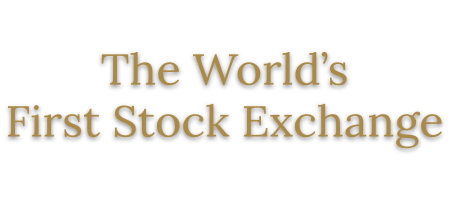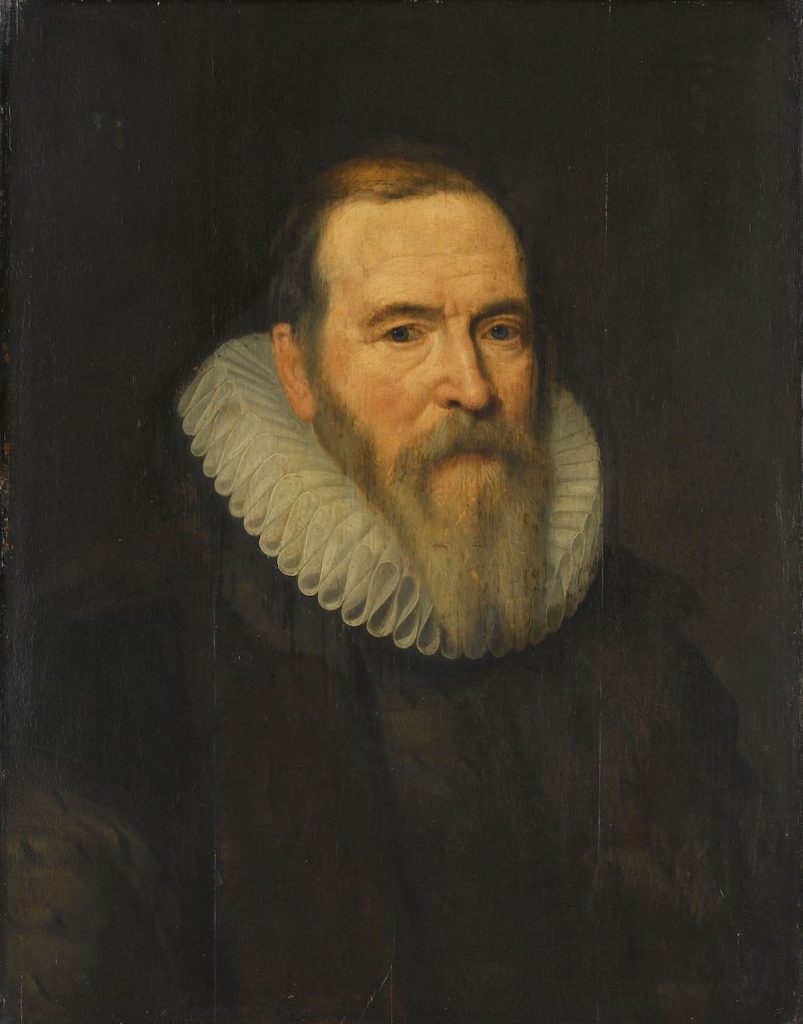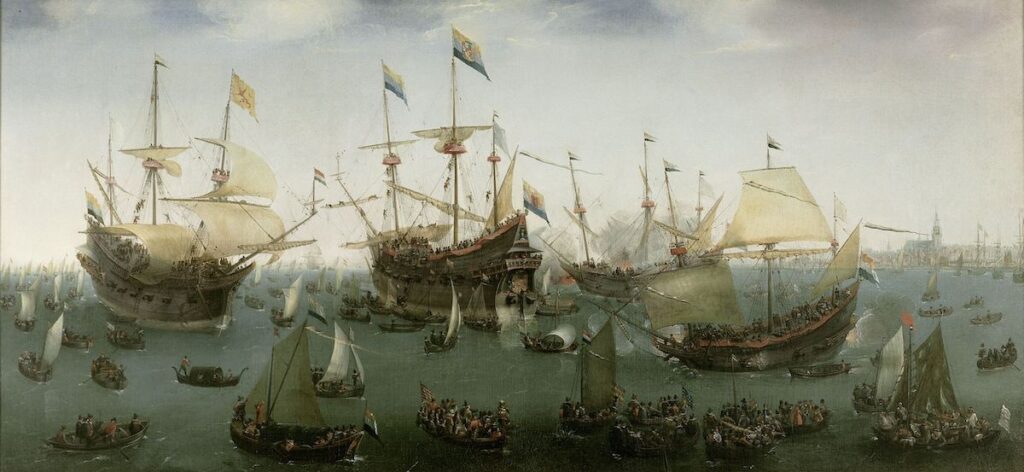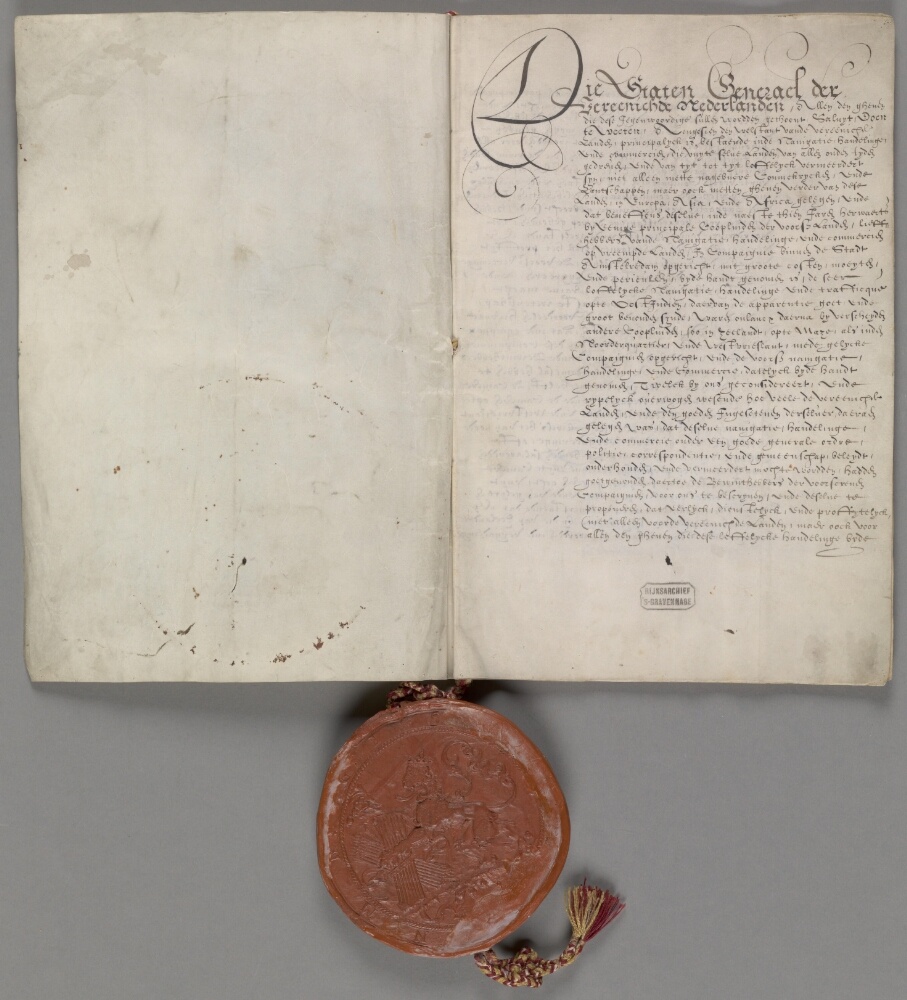The world’s first public company, founded by the state
It sounds odd, but it is true: the world’s first public company was founded by a state government. The Dutch East India Company (VOC) owed its existence to the States General of the Dutch Republic and in particular to Dutch statesman Johan van Oldenbarnevelt (pictured below).
A forced merger
Before the founding of the VOC in 1602, there were already Dutch companies that sent expeditions to East Asia to trade spices. They were temporary enterprises—generally referred to as the precompanies (voorcompagnieën). In 1595 the flotilla of the earliest precompany, the Compagnie van Verre, set sail from Texel. The expedition was not particularly successful in commercial terms, but it did prove that it was possible to do business in the East Indies without being overpowered by the Portuguese, who dominated trade with the Orient, so others soon followed suit. Between 1595 and 1602 no fewer than seven flotillas totaling fifty vessels sailed from Amsterdam to East Asia. Another thirty ships set out from Hoorn, Enkhuizen, Rotterdam, Middelburg, and Veere. Not every vessel returned to the Dutch Republic, but those that did were laden with highly profitable cargoes, and the costs of the expeditions were recovered several times over.
There was fierce competition among these various undertakings, which was not to the liking of the States General, which reasoned that it would profit the Republic’s economy if the different companies stopped competing with one another and took on the Portuguese instead. Even more importantly, the Republic was at war with Portugal. (Actually, it was at war with Spain, but because the king of Spain had also acquired the Portuguese crown in 1580, the Dutch were de facto at war with Portugal, too.) The States General reasoned that a strong, united company would benefit Dutch trade with the Far East as a whole and could be deployed to real effect in the war with the Portuguese.
It was no easy task to persuade all the existing companies, with their individual interests, to buy into the idea, but in the end they came to an agreement. Prince Maurice, stadholder of Holland and Zeeland, and Johan van Oldenbarnevelt did everything they could to make a success of the negotiations, and the States General played on the conscience of the directors of the different companies by contending that they held the key to ‘destroying the enemy and protecting the nation’.
In March 1602, the States General granted the new company a 21-year charter that gave it a monopoly on trade with all the areas to the east of the Cape of Good Hope and beyond the Straits of Magellan. No other body was permitted to conduct trade between the Republic and Asia for as long as the charter was in effect. The Company was divided into six branches, which were located in the towns and cities where the precompanies had been established. All the directors of the precompanies that were still in business at that time also became directors of the VOC; that way everyone was kept happy.
A strange hybrid
The new company turned to private investors to furnish capital (you can read all about the IPO of the VOC in this post), but was dependent on the government for its status. Moreover, the provision that the VOC had the right to act in name of the Dutch Republic in Asia came with strings attached. The States General expected the company to wage war in order to ensure the long-term presence of the Dutch in the Far East. In sum, the VOC was not just a commercial trading enterprise, but also an extension of the Dutch state.
Still, the IPO was a success; investors were apparently not put off by the complex status of the VOC. But after a few years, shareholders started to get doubts. Partly because of the high costs of waging war with the Portuguese and building strongholds in Asia, the VOC was not nearly as profitable as the precompanies had been on average.
Shareholder protests against the company policy arose in 1613 and again in the early 1620s, shortly before the VOC charter would expire. Some shareholders argued that the company could better be dissolved; private companies would fare much better commercially. The Dutch government was impervious to their view. It extended the charter for another 21-year period. In later years, until the company’s bankruptcy at the end of the 18th century, it would be extended a few times more—these times without much prior discussion. In my blog post on the coming into being of the Dutch East India Company’s fixed capital stock (TBA soon), I explain how momentous this was the development of the modern corporation.





